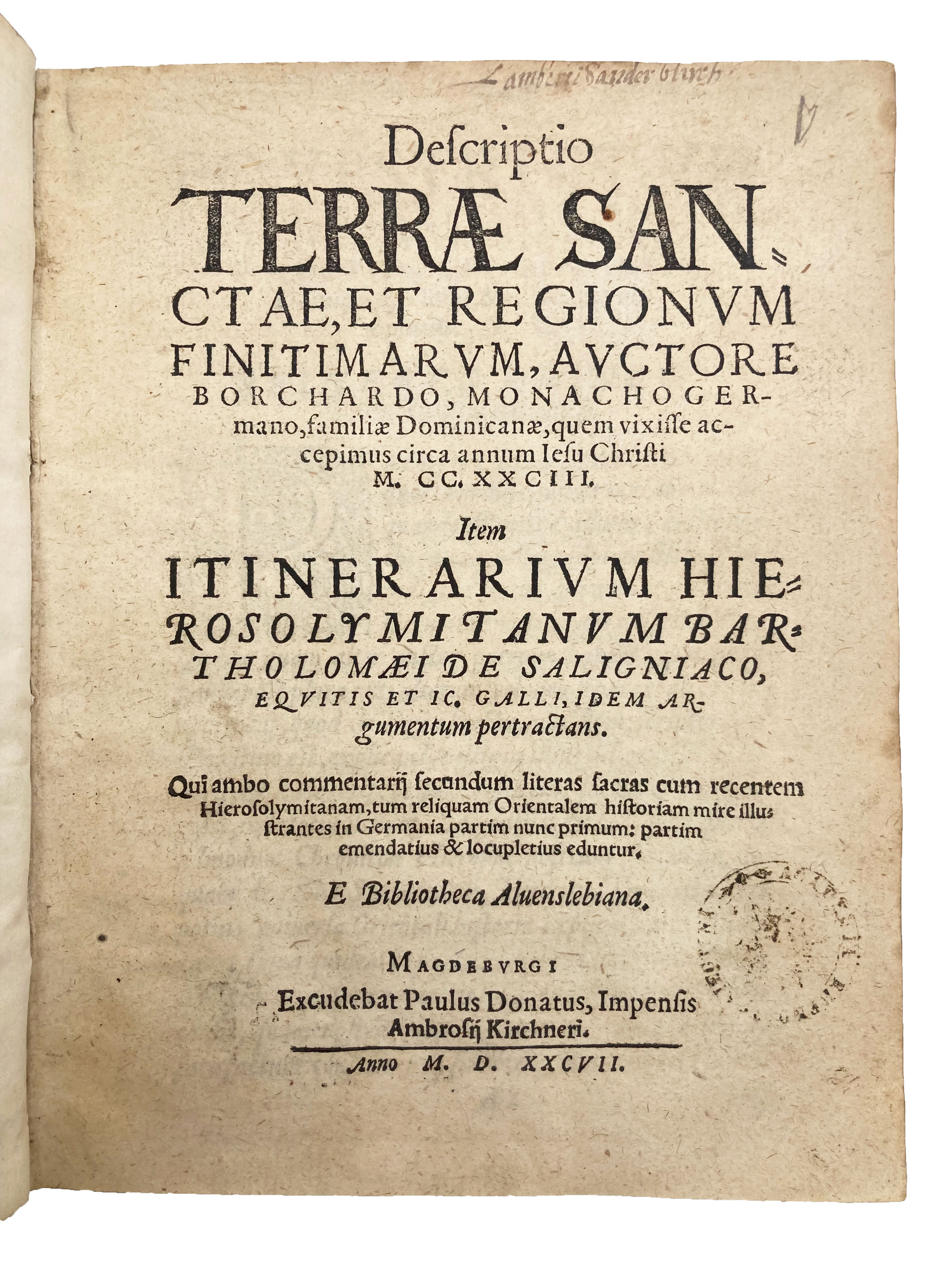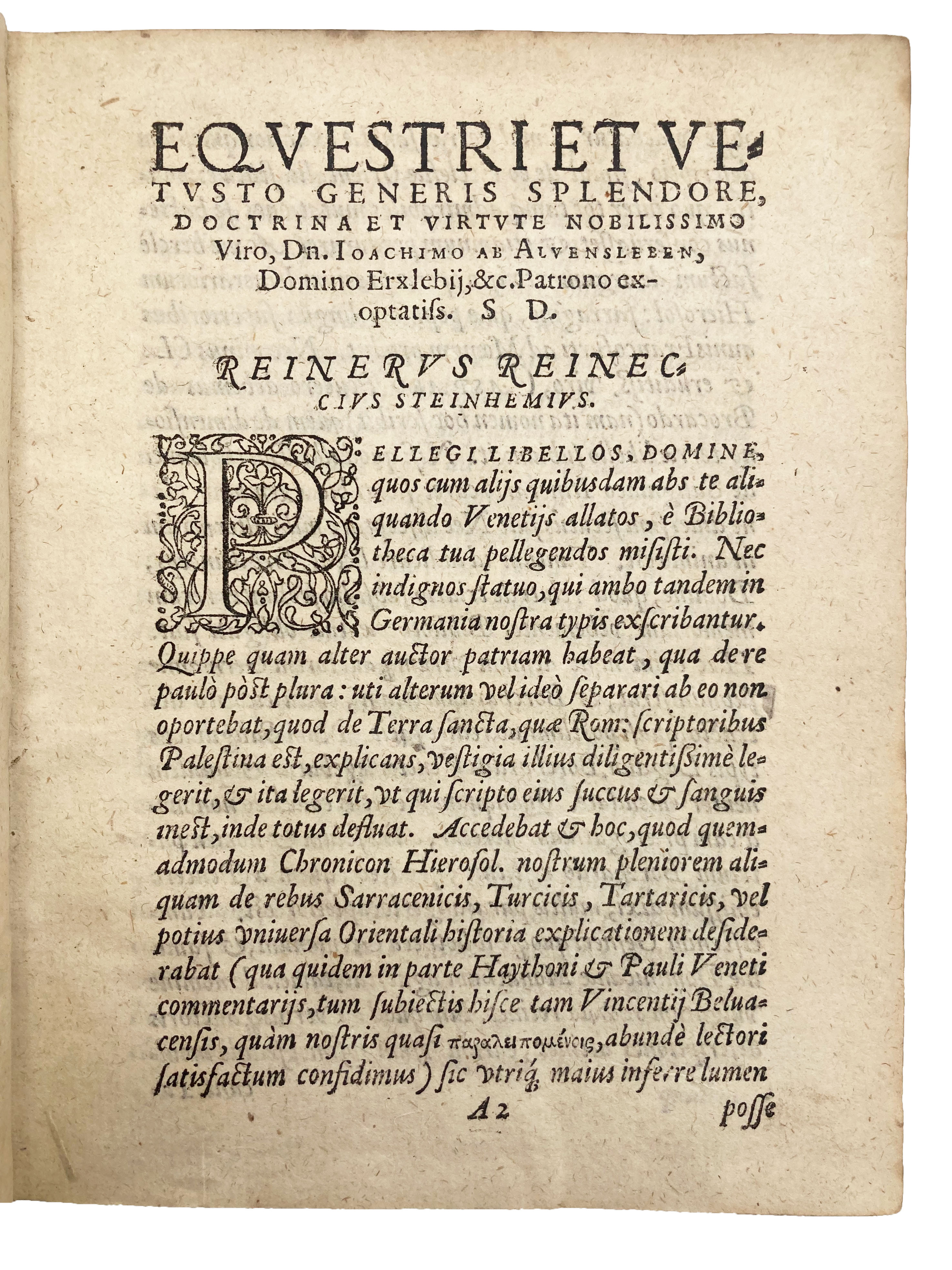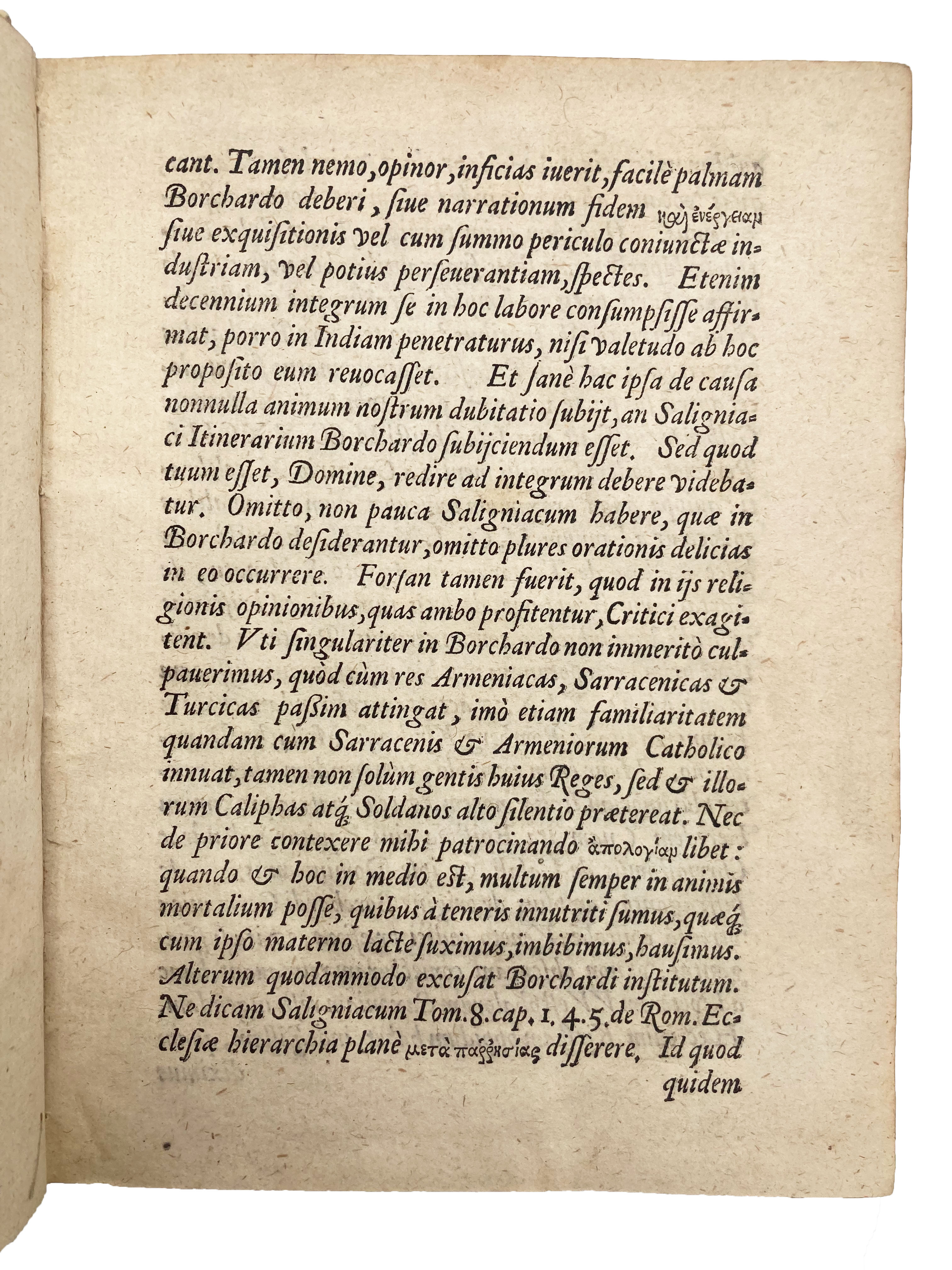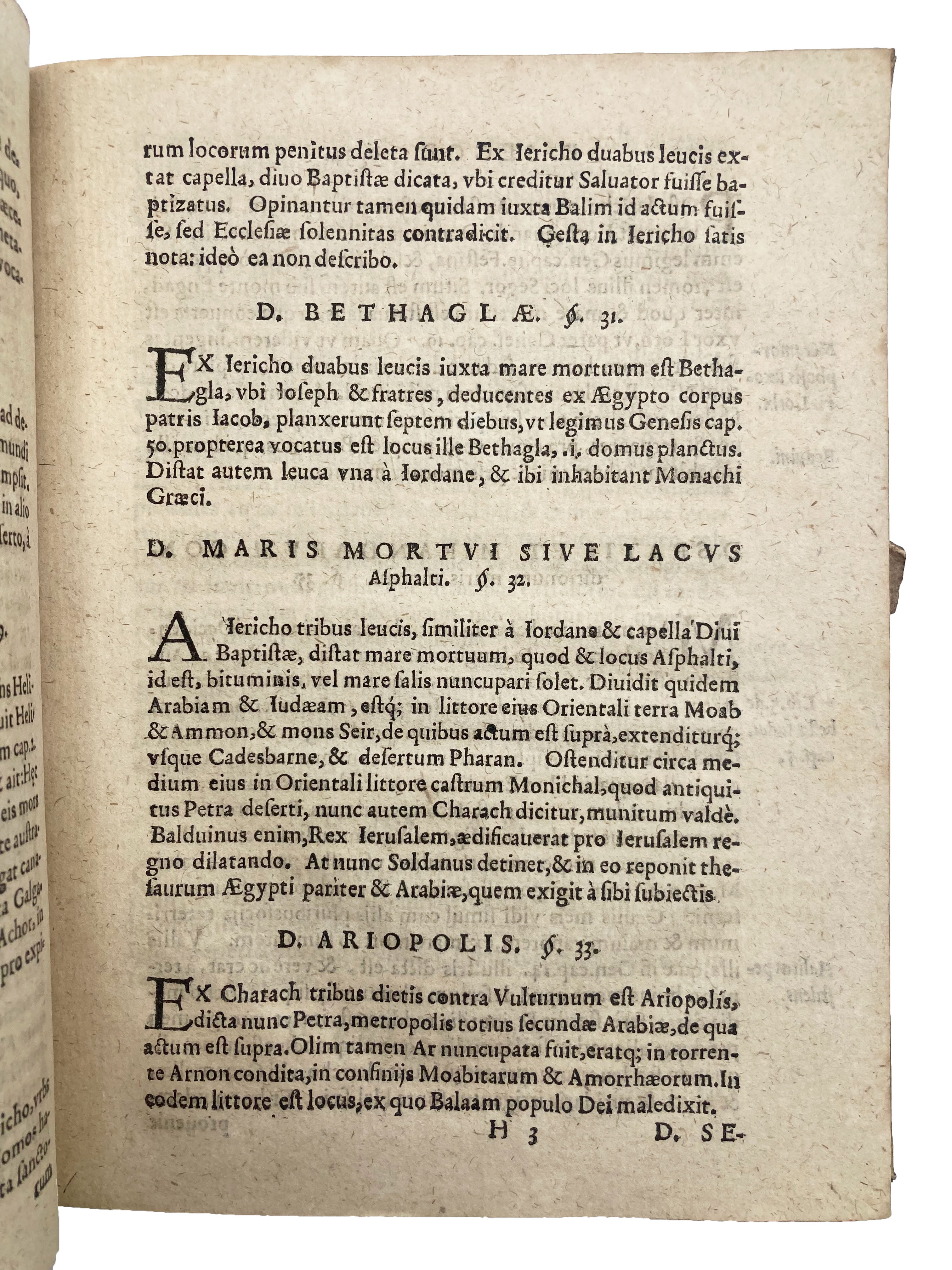BURCHARD OF MOUNT SION; SALIGNAC, Barthélemy de.
EARLY TRAVELS IN THE HOLY LAND
Descriptio Terrae Sanctae et Regionum Finitimarum. [...] Itinerarium Hierosolymitanum.
Magdeburg, Paulus Donatus, 1587.£2,250.00
4to. 2 works in 1 vol., separate titles and signatures, ff. [110]. Roman letter, little Italic or Greek. Decorated initials and ornaments. Slight age browning (indifferent paper), old paper tag to outer edge. A good, clean copy in C17 vellum, ms title to spine, c.1800 printed paper label Historia Ecclesiastica Quarto n.188, c1600 autograph ‘Lamberti Sander (?)’ and early circular stamp to first title.
A good copy of the first edition of these important combined travel accounts of the Holy Land and neighbouring lands, in the version taken from mss preserved in the wealthy library of Joachim I von Alvensleben (1514-88). The friar Burchard of Mount Sion travelled to the Middle East in the C13, which resulted into the composition of ‘Descriptio Terrae Sanctae’ – one of the major medieval European accounts of the Holy Land. He travelled via Sicily, Egypt, and Armenia, and spent the years 1274-84 in Palestine. ‘Descriptio’ begins with a geographical definition of ‘Holy Land’, including descriptions of areas in today’s Lebanon (Tyre, Sidon, Beirut, Byblos, and Tripoli), Jordan, and ancient Palestine (including Gaza), as well as Jerusalem, with a special emphasis on New Testament places where Christ lived and preached. It provides a priceless account of what those places looked like in the C13, e.g., about a new church in Bethlehem he writes: ‘The whole floor is laid with marble of many colours and a great variety of decorations, the cost of which is impossible to estimate.’ The second part focuses on the various nations and communities inhabiting the Holy Land, e.g., Muslims, Syrians, Greeks, Nestorians, Maronites, Nubians, and Armenians. It is followed by a long description of Egypt, then ruled by the Mamluks. The second work was written by Barthélemy de Salignac, of whom nothing is known, and had first appeared in print in Venice in 1518. Divided into short narrative sections, the 10 chapters discuss his departure from Venice and travel via Istria and Albania; his visit of the Ionian islands and Cyprus; a description of Palestine, Israel, Syria, Arabia, the ‘kingdom of Gaza’ (‘located near the sea, with a big population, with a semicircular shape’), and today’s West Bank; an overview of Jerusalem and the main religious sites within the city and surrounding areas, as they looked like in the early C16. For instance, the sanctuary on Mount Calvary is described as having been built with lots of marble and alabaster. A most interesting collection.
Virginia, Huntington, and Harvard copies recorded in the US. VD16 B 9809; Röhricht, Bibliotheca geographica Palaestinae, p.173.





